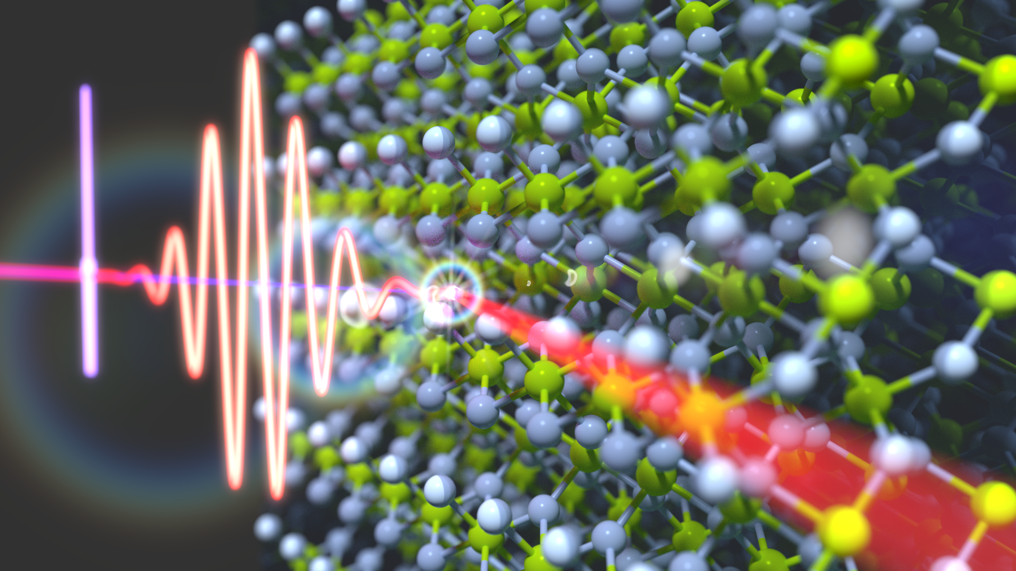An international research team involving a researcher at Tsukuba University uses attosecond laser pulses to study electronic excitations in a dielectric crystal, which may open the way for novel computer logical elements and optical devices

The international research team has analyzed the ultrafast electronic response inside magnesium fluoride (MgF2) crystals caused by very short laser bursts. They found that the electron behavior at attosecond timescales was similar to that seen in both atoms and solids. This work may lead to better control of the electronic activity in previously overlooked materials.
In the past decade, light-induced ultrafast electron dynamics in solids in the femtosecond (10-15 second) and the attosecond (10-18 second) regimes have been intensively studied towards the realization of future ultrafast electronics, optics, and optoelectronics. However, the fundamental understanding of many-body effects, which emerge from the interaction of many particles, in such ultrafast electron dynamics has been missing due to their complexity.
The emergence of excitons is a typical case of these many-body effects, which are among the most important quasi-particles in solids from both fundamental and technological points of view. Therefore, the development of a microscopic understanding of ultrafast exciton dynamics is an important milestone towards the science of nonequilibrium electron dynamics.
Now, a research team involving a researcher at Tsukuba University has used attosecond transient reflection spectroscopy to study core-level excitons in magnesium fluoride crystals.
“Thanks to the utilization of independent calibration experiments, we were able to achieve results that matched with theoretical simulations,” says author Professor Shunsuke Sato.
An important finding was that the exciton acted like a hybrid between an electron orbiting a single atom, and an electron delocalized over a bulk material. The researchers propose methods such as adding an external electric field or mechanical strain to the crystal to precisely control this response.
“Exploring solutions beyond classical electronics, is becoming increasingly important if we want to move beyond current technological computing limits,” Professor Sato says. “The results of our research may lead to new materials for performing computations faster and more efficiently than current systems.”
Original Paper
The work is published in Advanced Functional Materials as “Unravelling the intertwined atomic and bulk nature of localised excitons by attosecond spectroscopy” (DOI:10.1038/s41467-021-21345-7).
Correspondence
Assistant Professor SATO Shunsuke
Center for Computational Sciences, University of Tsukuba
